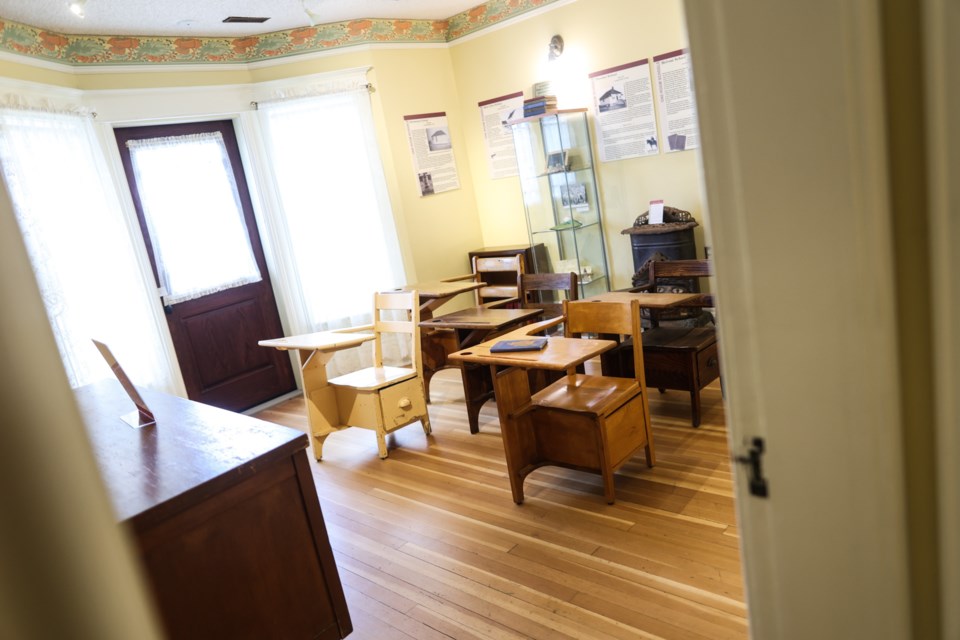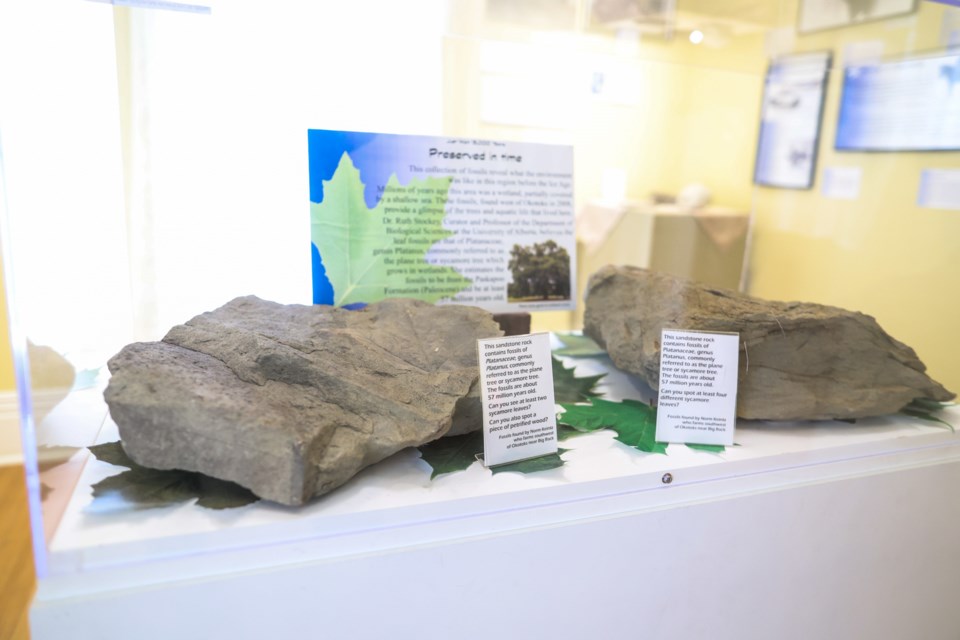The Okotoks Museum and Archives has refreshed its lineup of exhibits.
New to the museum on the second floor is an exhibit titled Just Wait 5 minutes, or 15,000 years.
“It’s about the weather’s impact on Okotoks and residents, going back as far as pre-Ice Age through to present times,” said Okotoks Museum and Archives specialist Kathy Coutts.
“For the Ice Age era, we have information on the Big Rock, and we also have some marvellous fossils that predate the Ice Age.”
The exhibit features a 57-million-year-old fossil of 10-inch leaves from a plane tree discovered by a farmer in 2008 and donated to the museum.
“They provide an insight of what the region looked like before the Ice Age, preserved in time,” Coutts said. “They are by far our oldest artifacts in the museum. They weigh a ton and they’re just marvellous because it’s really preserved in time.”
The exhibit dives into more recent history, too.
“Then we go right through and talk about spring, summer, autumn and winter in this region and what some of those seasons have been like over the last century,” Coutts said.
To accompany the technical dialogue of climate in the region are two videos offering diverse viewpoints.
“We have two videos; one is the scientific explanation of the Big Rock,” Coutts said. “Then we also have the oral history by a Siksika Nation member who tells the legend of the Big Rock and the Napi story.”
One exhibit is making a return to the museum.
“We continue to have on the second floor the One-Room Schools of the Okotoks Area, which highlights the many one-room schools that used to exist before the town’s schools,” Coutts said. “So there’s lots of history and memories of going to those schools.”

Between the focal points, however, are smaller displays waiting to be found by those who wander.
“In the nature of the house, there’s little alcoves and little rooms, such as the little area at the top of the stairs, which is Uniquely Okotoks, a collection of artifacts unique to Okotoks,” Coutts said.
Among the items are Okotoks Oilers memorabilia from the 1950s and various domestic goods such as trivets and flour sacks from the early 1900s.
“We try to fill each space with something new, so in one hallway is a bit called Forgotten Foothills, about those communities that don't exist anymore and are long-forgotten,” the curator explained.
Remaining on display is an exhibit detailing the history of residential schools in the Okotoks area.
“We’re also continuing our Indigenous exhibit which features the history of the Dunbow Industrial School and shows the video Little Moccasins,” Coutts said.
That section, she added, will likely be a semi-permanent fixture in the museum, possibly growing as more information is gathered.
For more information, visit Okotoks.ca.




